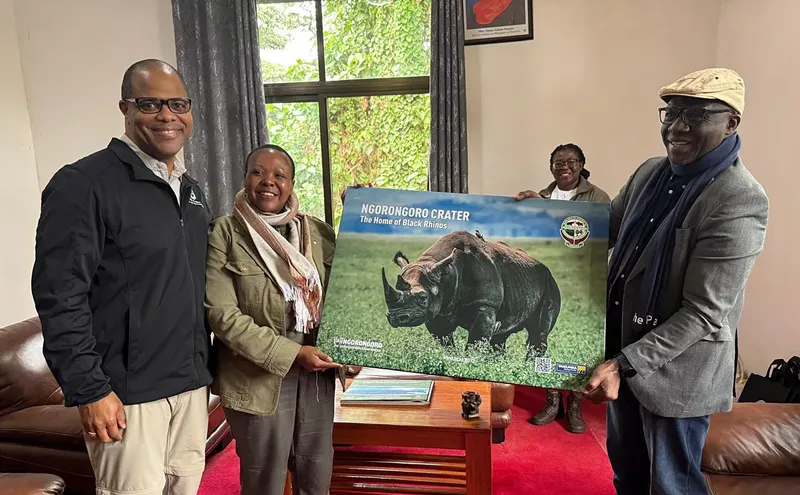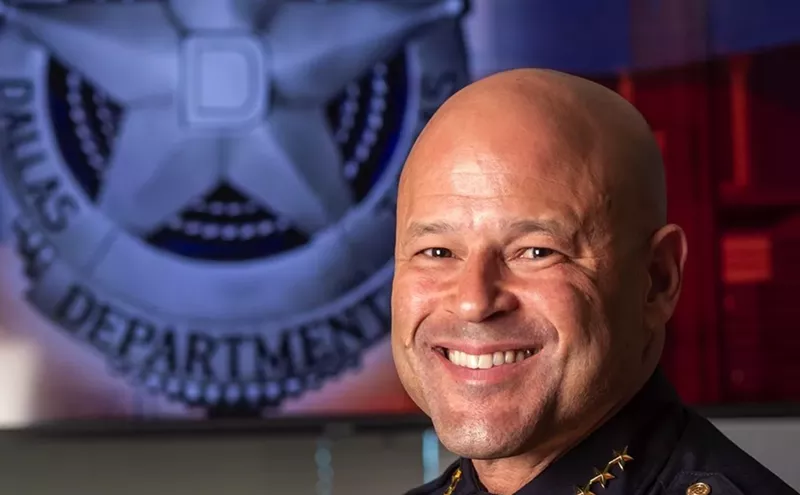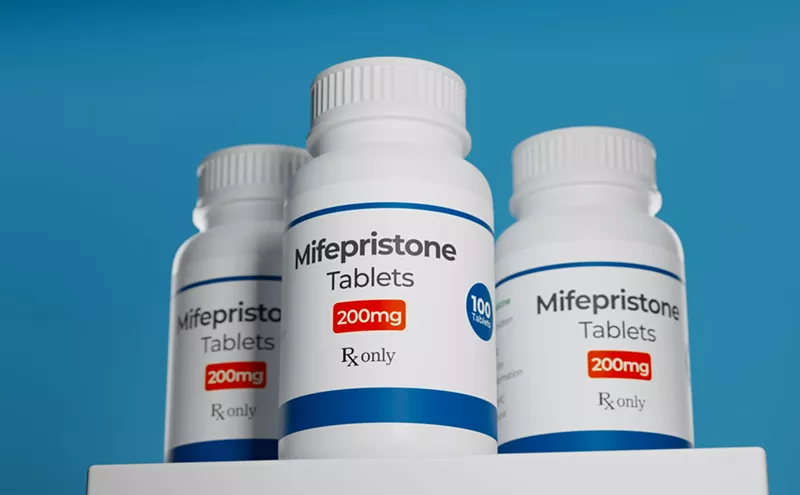Balcones Distilling is tucked under the far end of the 17th Street bridge in Waco. Its windows are obscured by rusty metal bars, a callback to its former life as a welding shop, and it sits among two rows of massive cement pillars that support the bridge, so cars constantly roll overhead with a rhythmic ka-thunk ka-thunk. The name "Balcones" refers to a fault line that stretches across the state and near Waco, a vast underground geological structure formed millions of years ago, producing springs throughout Central Texas and luring settlers with perpetual fresh water.
Six score and a few hangovers later, Chip Tate's little distillery offers a new kind of allure. Tate spent this summer working on a new copper still that includes a slender column that stands about 3 feet tall. It resembles a witch's hat and tilts slightly to the right. During a recent tour, the piece was perched alone in a corner of the main office, patiently waiting to be welded to the rest of the still. Each time Tate walked past he'd pause to admire his work.
At an early age, Tate was fascinated with baking. In high school, between studying and track workouts, he labored over loaves of bread, compelled by the idea that different bakers could take the same basic ingredients and create completely different end products. It led to long encyclopedia-reading sessions on the science of yeast. After graduation, Tate wanted to attend culinary school, but his parents scoffed at the idea. Instead, he turned to engineering and headed off to college on a physics scholarship. But in the classroom, that nagging question — "Why?" — kept getting in the way of the hows and whats of science, and delivered him instead to the philosophy department. Later he studied divinity and dabbled in craft beer, which some might argue belong in the same college. Now, it's whiskey.
In the summer of 2009, Balcones released Texas' first state-made whiskey since Prohibition. Baby Blue, made with a roasted blue corn meal, won five medals, including double gold, at the 2010 San Francisco World Spirits Competition. This October, the little distillery under the bridge won five double gold medals at the New York World Wine & Spirits Competition, plus two golds for single malt and Texas rum, as well as the sweepstakes Best in Show for all brown spirits. Balcones was also named Whiskey Magazine's Icons of Whisky Craft Distiller of the Year for 2012 and 2014.
Until now, though, even Texas' biggest booze nerds could be forgiven for never having sampled Tate's products. A bottle of Balcones can be hard to come by because of low production capacity and high demand. That's why Balcones recently acquired a 65,000-square-foot building, a storage space built in 1923 that survived a 1953 tornado, five blocks away from the current 2,600-square-foot facility. It's got good bones, and it will allow Tate to sate the many thirsty palates that've long sought his particular style of liquid art.
Tate's timing couldn't be better. Along with the general rise of locavorism, there's an amber wave of resurgence in craft distilling across the country. In 2005 there were just 50 craft distilleries across the United States. That number has increased to more than 350. Texas, which had just 20 distilleries two years ago, now has 50. And new state laws have made distilling even more attractive: Starting this year, distillers can sell bottles of their liquor for off-site consumption and glasses of it on-site, opening new revenue streams for craft liquor producers.
So what are those distillers so mad about?
Kentucky, of course, has long been rightfully known as America's whiskey mecca, owing largely to the limestone aquifers lying beneath the Bluegrass Region. But it's not the only state sitting on limestone aquifers. Texas has them, too, big ones even, and they act as a natural filter and add calcium to water, which later in the distilling process mingles well with yeast.
Like old leather boots, smoke and grit, there are other fundamental characteristics of Texas that make it a beautiful place to distill whiskey — namely the menacing sun that rises long and high in the big Texas sky each summer. The wider the gap between hot and cold temperatures, the better the conditions for barrel-aging whiskey. Through the seasons, at night and during the day, wood inhales and exhales whiskey in long, deep breaths. During summers, as temperatures soar, pressure builds in barrels and alcohol pushes its way into the capillaries of the wood. Then, as temperatures fall, the whiskey is sucked back out of the wood, with additional flavor complexities in tow. Dramatic differences in temperatures intensify this process, which is why Texas whiskey matures more quickly than whiskey made in cooler environments.
The other essential variable to whiskey is grain, of which Texas has plenty, particularly in the Panhandle. Along with a bit of science savvy, deep pockets and fortitude, the state has all of the essentials for a fine bottle of whiskey.
But while Texas has an environment suited for whiskey-making, it takes some skill, and some practice, to produce something drinkable. In its most stripped-down form, distilling consists of four steps: mashing, fermenting, distilling and aging. The key ingredients are grain (mostly corn and rye, barley or wheat) ground into a fine meal, water and yeast. Give 20 distillers those ingredients with the necessary equipment and they'll all produce 20 distinct products. That's where the art comes in.
Dan Garrison of Garrison Brothers Distillery in Hye starts his straight bourbon by selecting high-quality organic corn. Each year he makes the drive from his distillery in the Hill Country to the Panhandle to analyze the starch content of different varieties of corn. He's meticulous about each ingredient and rejects shipments for a variety of reasons, never willing to risk a degradation of the final product.
Using both aquifer water and rain water, Garrison also has 65 acres of wheat near his distillery. "Everything comes from Texas except the barley, which doesn't grow well here," he says.
After the ingredients are in line, Garrison starts cooking. "Essentially, it starts as a giant batch of cornbread," he says. "We use the well water to cook with, which contains sulfites and calcium and all sorts of different minerals that we want. That's all basically the yeast's food."
Next the mash is pumped into fermentation tanks, where dry yeast is added, which brings up another process: finding a good yeast strain. Jim Beam has long proclaimed that the secret to good whiskey is yeast, and they keep their particular strain, developed more than 75 years ago, a closely guarded family secret. Garrison has a preferred strain as well, and he's not talking either.
Once the yeast has been added to the mix, it sits for a few days before being pumped into the still, where what essentially is a corn-based beer is heated until alcohol vapors ascend through the still. As it cools, the vapors are reverted back into a liquid known as white dog. But white dogs bite. So it's put in new, charred American white oak barrels until the white dog turns amber and is generally more agreeable, which typically takes a couple of years.
Persuading all those processes and ingredients to behave requires a special touch. There are usually a few exploded barrels of whiskey along the way, perhaps some nuclear-burned corn, even bankruptcy. Barrels arrive not sufficiently charred or rain soaks a load of rye en route to the distillery. All are mishaps every Texas distiller has experienced.
The last step in Garrison's process involves sealing bottles with a black wax. Like many craft distillers, Garrison dips each corked bottle in hot wax and seals it with his trademark star. His wax dippers come in the form of volunteers. Each season, when Garrison's next batch is ready, he puts the call out, and his dedicated fans hit Highway 290 west of Johnson City until they get to the tiny post office in Hye, where they turn south and drive past a rusting grain mill. They follow the beat-up one-lane road lined with knee-high grass, past a few farm houses and windmill before turning left at the cattle guard that leads to the distillery. From there, a pair of tire tracks winds past pastures of cattle grazing under big shade trees.
At the distillery, RVs and trailers crunch through the dry grass and pick a spot to pitch camp on, sometimes for a couple days. As the bottles get filled, the volunteers start the process of dipping the corked tops in hot black wax. Garrison signs each finished bottle.
At first it's messy and slow. Soon enough, though, the volunteers get a handle on it, and by the end of the second day, Garrison has to hustle to keep up as product piles up on his table. For their effort, volunteers are paid with a bottle of bourbon, which retails at around $75. There are more than 3,000 people on the waiting list.
Rebecca Creek Distillery sits off a two-lane road where north San Antonio starts to give way to wide-open spaces. Rebecca Creek's Fine Texas Spirit Whiskey started popping up on liquor store shelves last year, its rectangular bottle holding a light golden liquid, its label decorated with whimsical scrolls, all topped off with a dark, wooden cork. The distillery's owners have said that they modeled its flavor profile on Crown Royal, a Canadian blend of 50 whiskeys. But a sticker near the bottom of the bottle makes clear the story they're hoping to sell: "Produced and bottled with care in the Texas Hill Country."
"Nothing against Canada, but let's do something from Texas," co-owner Mike Cameron told the San Antonio Express-News in 2011. "It's a Texas-based company."
His whiskey is a blend of an 8-year bourbon purchased from another distiller and, per a mandatory statement on the back label, 31-percent grain neutral spirit (GNS, vodka), along with a younger whiskey Cameron says they distill. Blenders, or spirit makers, aren't in any way obligated to spill the booze on their recipes. Cameron says that they produce and distill the "majority" of what goes into each bottle, which might include the GNS, since they also distill vodka at their facilities.
So long as distillers have been producing whiskey, other businesses have seized the opportunity to rectify, mix or blend it. By the 1890s, rectifiers were so incessantly passing off blends as "aged Kentucky bourbon" that miffed distillers lobbied for the Bottle-in-Bond Act, which was passed in 1897 and established certain regulations that required bonded spirits to be the product of one distiller at one distillery in one season, writes Michael Veach in his book Kentucky Bourbon Whiskey: An American Heritage.
Still, more than 100 years later, the origins of a bottle of whiskey can still be a bit murky, and a bit controversial.
Take the whiskey called 1835, which is bottled by North Texas Distillers in Lewisville. The name is a salute to the year settlers in Gonzales stood their ground against Mexican troops in what is historically considered the start of the Texas Revolution. The label also reads, "Come and take it," on both the back and front, along with a picture of the iconic cannon that was the seed of the conflict. The words "Texas Made" are printed front and center on the label.
It's unlikely that a single speck of Texas, much less the battle of 1835, is actually in any of those bottles. Stretching the term "Made in Texas," the drink is a blend of whiskeys, most or all of them likely from Kentucky, and is only bottled in Texas. The highly astute label reader or whiskey aficionado would be able to discern this, but the average consumer might not. Despite all the Texas banter, the label lacks one key word that is all-telling: "distilled."
Federal regulations tell a whiskey maker what it can and can't put on its labels. The most important line in the pages and pages of codes unequivocally explains that distillers can use the word "distilled" on a bottle only if they physically distilled the product in its entirety at their facility. If a company does anything else — bottle, blend, package, produce or lovingly coddle — but does not actually create original whiskey from the corn up, they are not allowed to use the verb "distilled" on the label.
Texas Silver Star Spirit Whiskey is another blend from Lewisville, also bottled by North Texas Distillers. It contains 20-percent grain neutral spirits. The back label explains the whiskey is "a tribute to the Texas cowboy of the Chisholm Trail and is meticulously hand-crafted using nothing but the finest ingredients and aged to perfection."
There's no way to know where it's actually distilled.
"There's certainly nothing wrong, per se, with buying a spirit from another producer whether you blend or just bottle," says Charles Cowdery, author of Bourbon, Straight: The Uncut and Unfiltered Story of American Whiskey. "Most of the talk about blending is itself a smokescreen. Most people who resell spirits made by someone else do little more than put it in a bottle."
Cowdery doesn't see anything wrong with these bottlers, as long as they're forthcoming.
"People who make anything from scratch will usually say so straight out. Anyone who doesn't, or who weasel-words it, probably does not," he says.
While some are obviously weasel-wording by romanticizing Texas history, others shoot straight. Leonard Firestone and Troy Robertson of Firestone and Robertson Distilling Co. in Fort Worth met through their kids' playgroup, then spent years researching craft distilling. They traveled the world, studying different methods and dissecting flavor profiles. When they got serious, they had a proprietary wild yeast strain developed by their head distiller, Rob Arnold, who holds a master's degree in biochemistry with a concentration in microbial fermentation and analytical chemistry.
For now, Firestone and Robertson are patiently waiting for their house-made craft whiskey, which was barreled two years ago, to mature. In the meantime, they created a blend called TX Blended Whiskey, which won double gold medals and Best in Class in the category of American Craft Whiskey at the San Francisco World Spirits Competition this year. The back of the label of reads: "We value two things: true craftsmanship and excellent whiskey. That's why we blend and bottle ..."
Cameron, of Rebecca Creek in San Antonio, defends his product's provenance, and says the amount of GNS mixed into his spirit "is far less than many of the major whiskey brands that are currently sold in Texas. The majority of all whiskey producers use GNS for back blending, so the practice is not uncommon." (Says Cowdery, "There is no GNS in straight bourbon nor in any other straight whiskey. Ever. None. Not a drop.")
Besides, Cameron says, it all comes down to taste. "Does it taste good? Do consumers enjoy drinking Rebecca Creek Spirit Whiskey? Is Rebecca Creek Spirit Whiskey reasonably priced? The answer to all three of these questions is, 'Absolutely.' We are selling every bottle we can make and it's now available in five states."
But the state's distillers are watching closely to make sure the blenders follow the law to the letter.
"If there's anything but the exact letters 'distilled by,' then they didn't make it," says Tate of Balcones. "They bought it, maybe they blended it, then a lot of times they hire a guy like me to help them with it. It's a branding opportunity. Does that piss me off as a craft distiller? Yeah. I can't think of a person I've told that they weren't like, 'What?' People actually do care."
Dallas County's first distillery was born out of a chance meeting at a Starbucks 12 years ago. Marshall Louis had a long history in the fine spirits business. Herman Beckley — scientist, historian and distiller — had always been a whiskey geek. They discovered their shared passion by chance, and have quietly been making whiskey ever since. Recently, they finally decided to roll out their products at the retail level, after their Texas Bourbon Whiskey won a silver medal at the American Distilling Institute Competition in the category of straight bourbon.
The Herman Marshall distillery is located in an industrial pocket of Garland, amidst a lumberyard and stale factory buildings. We're not in show business, the owners like to say, so the aesthetics don't matter much. They're happy to fly under the radar and over the bar. Read their bottles closely and you'll find that magic word: "Distilled and bottled by Dallas Distilleries."
Beckley is a student of both the science and history of distilling. He built two 500-gallon cypress tanks for open-top fermentation as a nod to the old traditions of making whiskey in the United States.
"Prohibition destroyed the whiskey industry," Beckley says. "We lost that knowledge about the craft in America. I've tried to bring back that original process as much as possible."
Along with the cypress tanks where the mash comes alive in a soft bubble, Beckley also heats the 400-gallon copper stills with steam, which is another nod to his forefathers. Plus, there's the all-important proprietary yeast strain, and the distillery's water is sourced from a spring in East Texas — a secret spot they like to keep between them and the whiskey.
The trail ahead for Herman Marshall, and for the rest of Texas' whiskey cowboys, is dusty but exciting. A handful of craft distilleries around the state are either rediscovering a lost craft or creating a new one. Will Texans reach for a bottle because of a price-to-flavor value, or will they align themselves with a bottle rich in art, history and Texas ingredients?
Tate has faith, but he sometimes fears it will get off course. Recently, when all the pieces of the new copper still at Balcones were finished and welded together, one of the last steps required Tate to get inside the assembled pot and weld down imperfections in the copper so that every inch of surface space is completely smooth. It was the rough equivalent of crawling down a manhole into a dark small orb, in which he could only crouch. With a burning torch.
"We're trying to create new styles of Texas whiskey, not just recreate," Tate says. "I think when you look at a lot of craft distillers, there is a lot of innovation. You can pull influence from different places. That's art. You're either innovating or imitating. You need to add something to it, or otherwise you're redoing."












